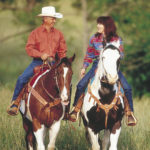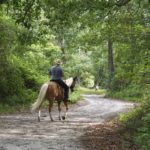Wounds – What to Watch For:

Bleeding; swelling; sudden lameness; an obvious defect in the skin or underlying tissues.
Wounds – What’s Happening:
The following guide will help you classify the wound for treatment.
- Abrasion: a surface injury that doesn’t penetrate all skin layers.
- Puncture: a deep tract extending into tissues, caused either by a sharp object, or a sudden blow.
- Full-thickness skin wound: one that penetrates all layers of skin.
Wounds – What to do:
- Step 1: Evaluate the wound carefully, to determine whether it’s an abrasion, puncture, or full-thickness skin wound.
- Step 2: Clean the wound with Betadyne solution and fresh, cold water. (Note: For a mild abrasion, in which the skin is intact and only hair has been peeled away, no further treatment should be necessary.)
- Step 3: If the skin has been broken, but can’t be separated (as in the case of a nasty rope burn), apply antibiotic ophthalmic solution.
- Step 4: For a puncture, flush the wound with dilute Betadyne solution (10 parts water to one part Betadyne). If the wound is near a joint, and you see “bubbly” yellow joint fluid seeping from it, apply a protective wrap, and get your horse to a vet as soon as possible.
- Step 6: Administer a dose of bute, to relieve pain, an reduce inflammation/ swelling.
- Step 7: If your horse suffered a puncture or full-thickness skin wound, slowly lead him home or back to camp, and summon your vet. If he’s unable to comfortably walk, send your buddy to the nearest phone for help.
Wounds – Risk Factors:
- Obstacles, such as fallen tree branches; overgrown trails, hiding barbed wire, or other such debris; water crossings, which could hide submerged branches, rocks, or debris; riding too close to other horses, resulting in a kick or bite; improperly staking out/tying horse, resulting in entanglement (a common cause of rope burns, which can vary from abrasion to full-thickness skin wounds).
Wounds – Preventative Measures:
- Ride only on well-maintained trails, and stay on the trail.
- Stay a horse-length behind/ beside other horses.
- Stick to clear/ shallow water crossings, watching the bottom carefully to avoid submerged rocks/ debris.
- Ask a reputable, experienced horse camper to demonstrate to you proper in-camp restraints for your horse.
Click here for more articles on Trail Riding First Aid.
Barb Crabbe, DVM, is a contributing editor at Horse & Rider. She is an Oregon-based equine practitioner.
This article originally appeared in Horse & Rider.





